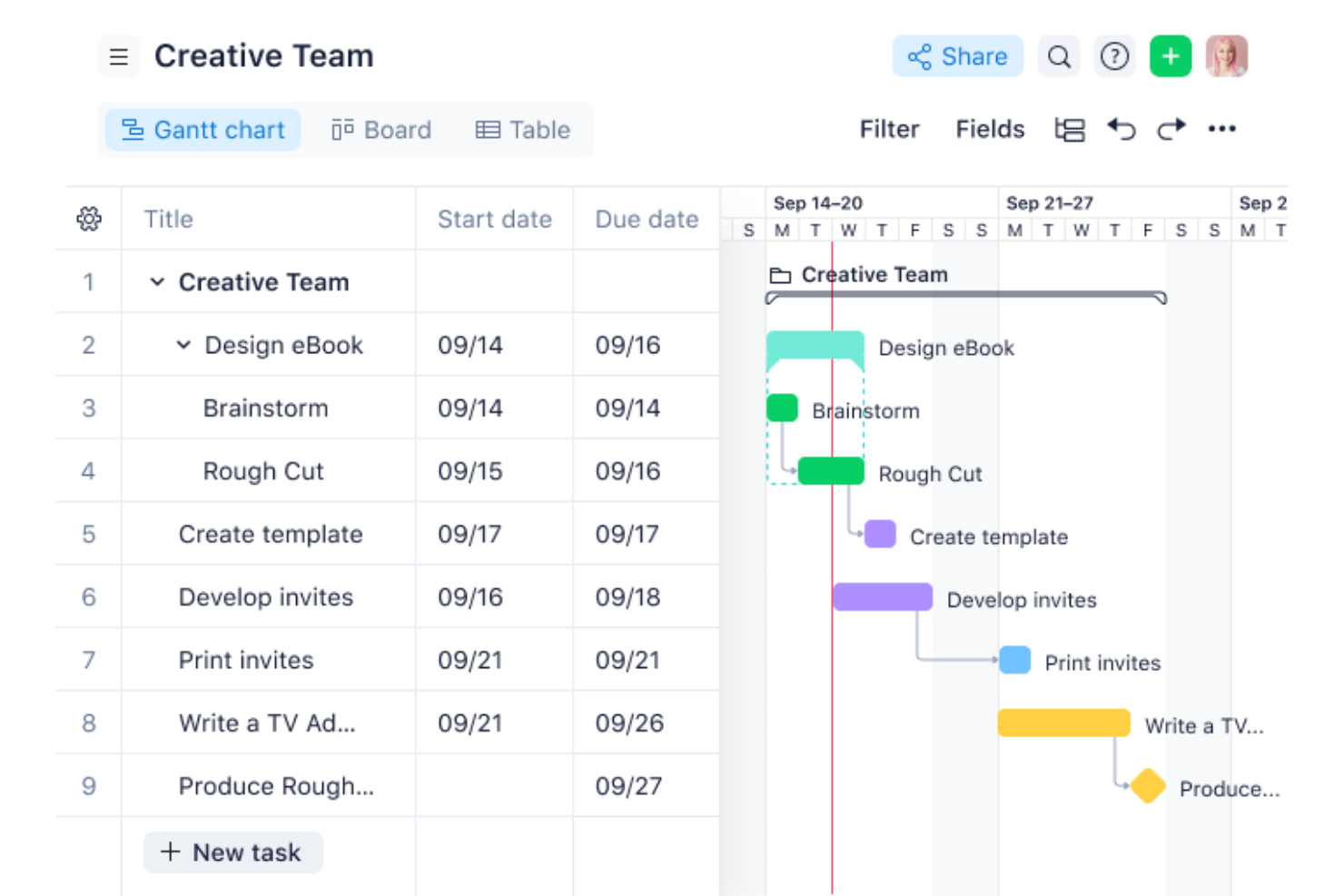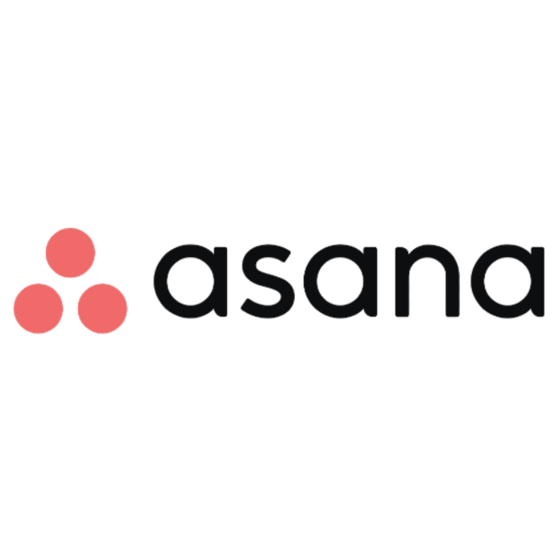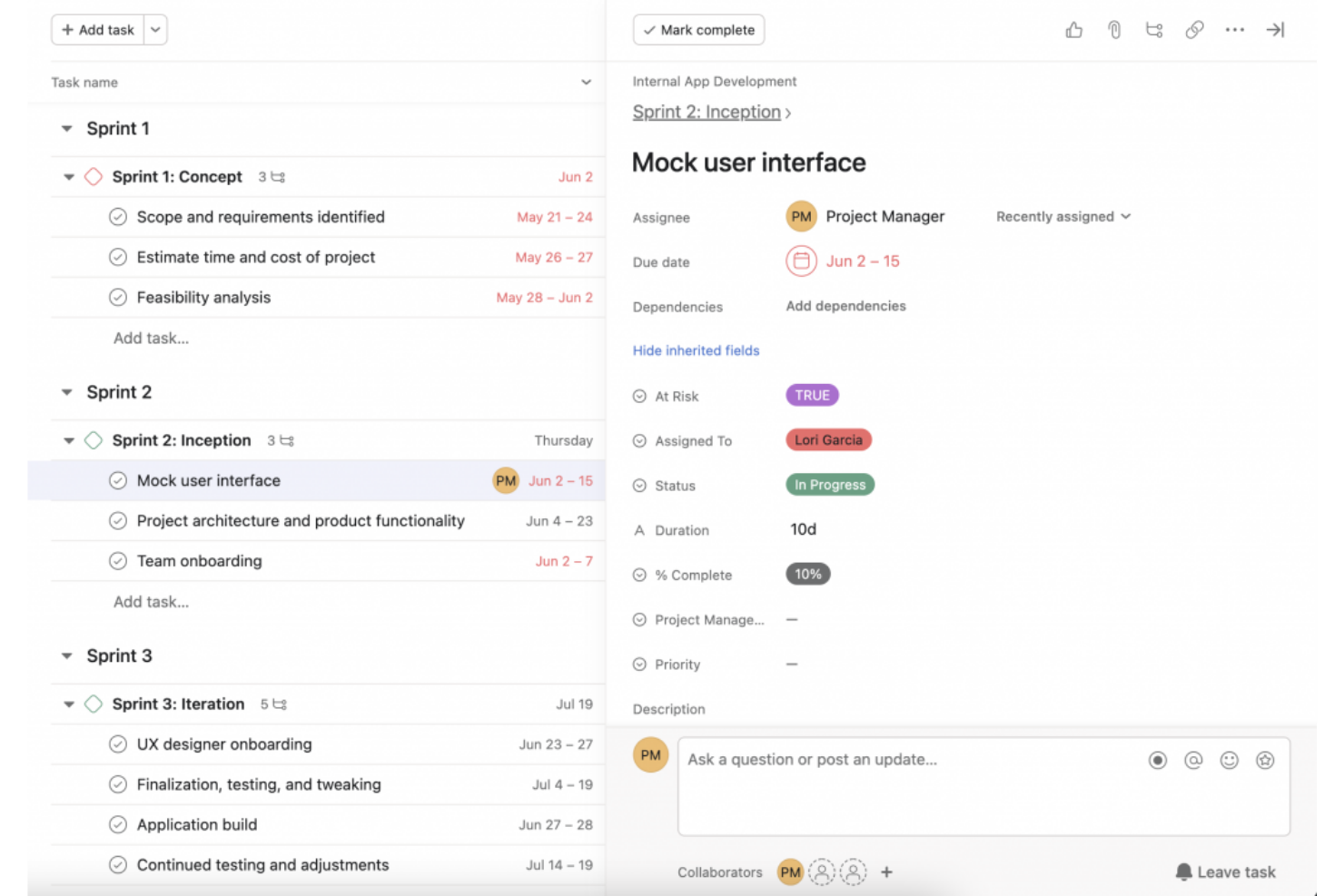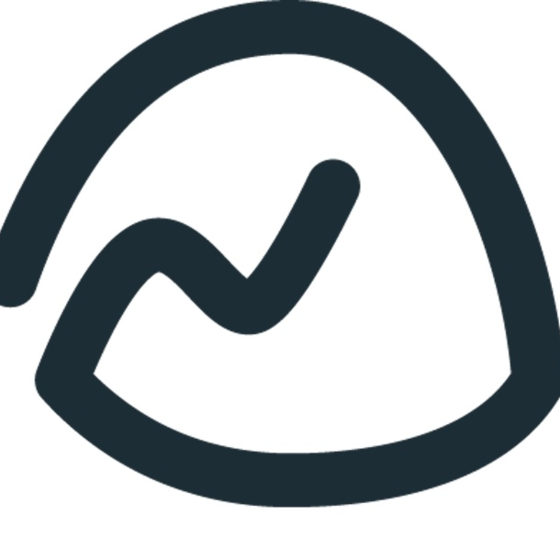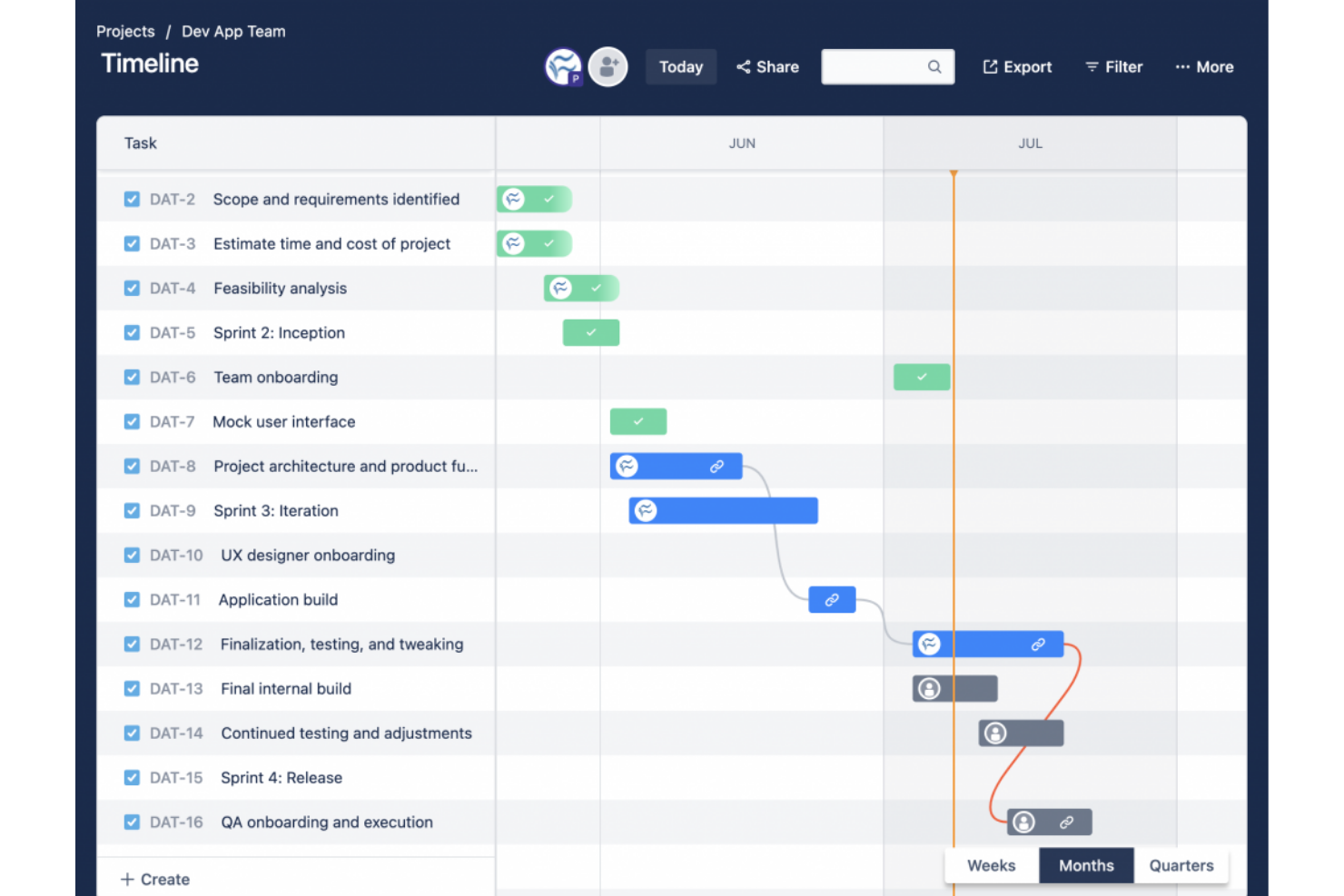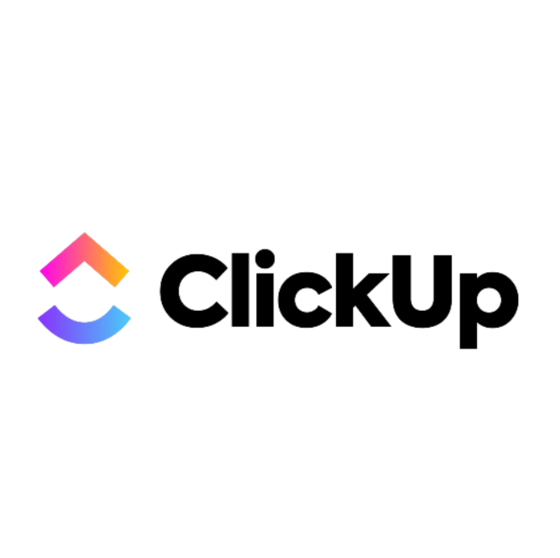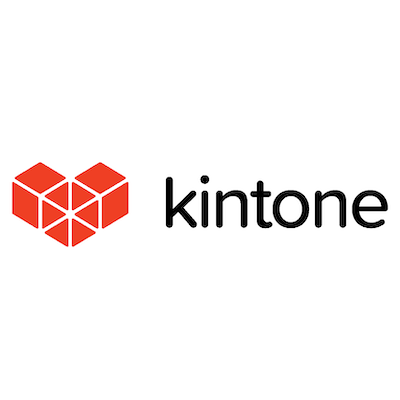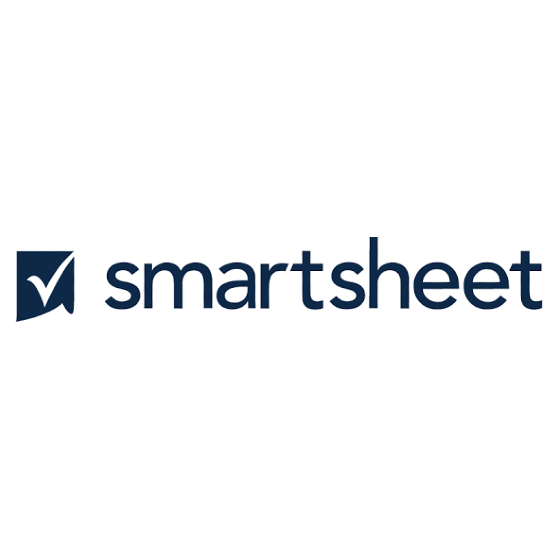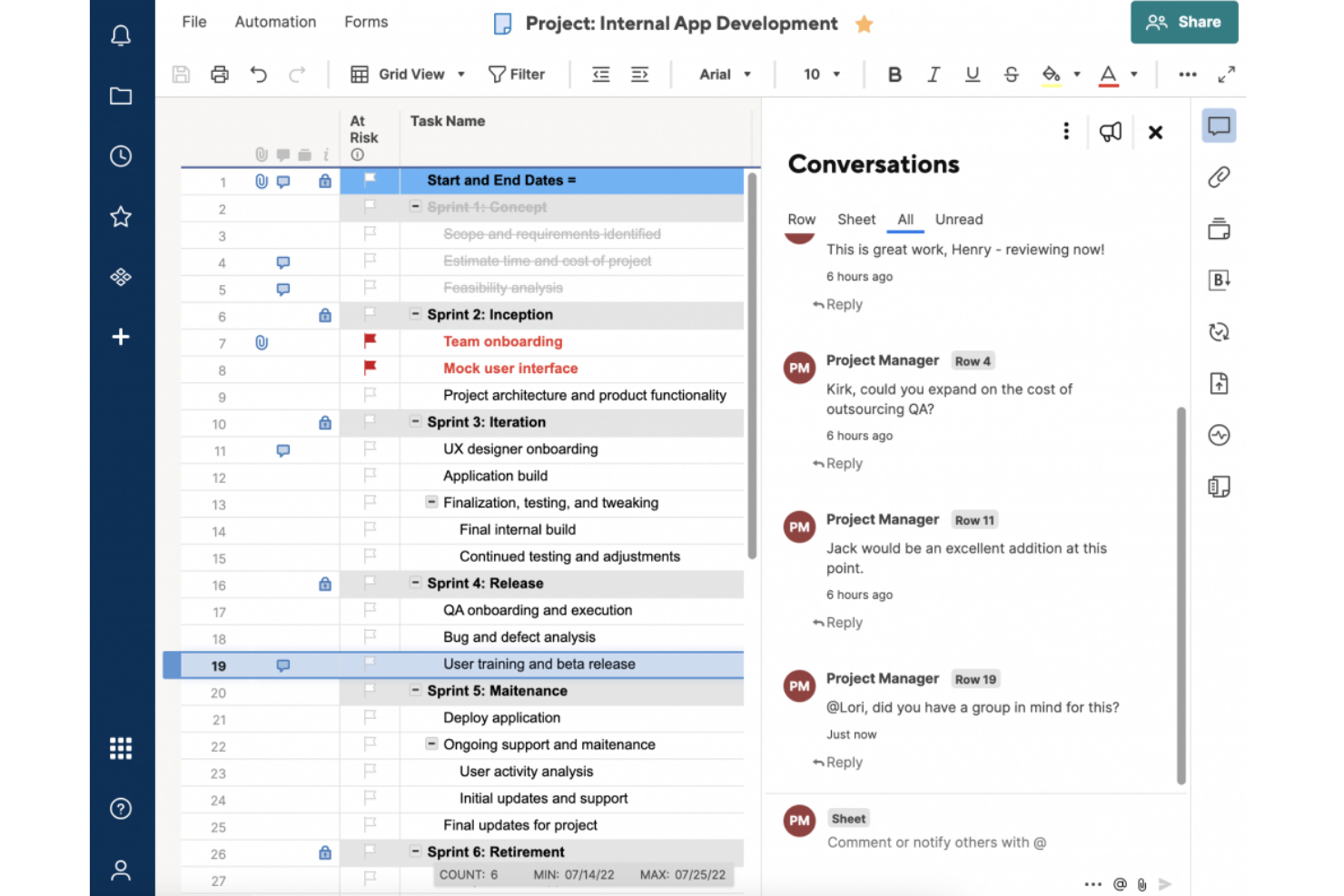10 Best Project Management Software for Business Shortlist
Here's my pick of the 10 best software from the 20 tools reviewed.
There are so many different project management tools that making a shortlist of the best can be tricky. You know you want to keep tasks organized, create clarity, and ensure high-quality, timely delivery of outputs and need the right tool for your projects and team. I've got you covered! In this post, I share from my personal experience scheduling hundreds of projects to round up my top picks for the best project management software for business.
What is Project Management Software for Business?
Project management software for business is a comprehensive digital solution that streamlines and facilitates the various aspects of project planning, execution, and monitoring within an organization. These tools typically include features such as task and timeline management, collaboration tools, resource allocation, document sharing, and reporting functionalities. They provide a centralized platform for you to plan and organize tasks, allocate resources efficiently, and collaborate seamlessly with the team, enhancing overall project efficiency and success.
The need for project management software in a business setting is paramount as it allows you to enhance organization, collaboration, and efficiency in project execution.
Overviews Of The 10 Best Project Management Software For Business
Here, I’ve given an overview of each of the best project management software for business that made it into my top 10 list. I’ve included their best use case, standout features, integrations, and pros and cons. I’ve also added a screenshot of the user interface, to give you a feel for the platform experience.
Wrike is a feature-rich workflow management software that’s highly configurable and versatile enough to meet the needs of unique teams and projects.
Why I picked Wrike: This software earned its spot on my list because of how robust and versatile it is. The project management capabilities cover not just basic project planning and task management, but also resource management, request forms, approval flows, and more. You can ensure every detail of your project is documented and accounted for, and keep track of your workflows in the same place.
In addition to being feature-rich, this platform is also super customizable. You can opt for custom work types if standard categories (like ‘task’ and ‘project’) aren’t quite suited to your use case. For example, you can use the software to manage recruiting, and create custom work types like ‘candidate’ and ‘interview’.
Wrike Standout Features and Integrations
Standout features include the platform’s team collaboration tools. Team members can share files and use live chat to discuss issues and exchange feedback in real-time. In-project discussions also help keep conversations contextual and connected to the work. You can tag someone to make sure they see your message, and use threaded conversations to keep communications streamlined.
Integrations include Microsoft Suite, Google Workspace, Asana, Basecamp, Dropbox, Salesforce, HubSpot, Jira, Slack, Shopify, and hundreds more.
Pros and cons
Pros:
- Guest access available for external collaborators
- Many smart AI and automation features
- Free plan available with unlimited users
Cons:
- Resource management limited to higher-tier plans
- Freemium version lacks subtasks
Asana is a cloud-based project management software that can be used to map out the details of projects and tasks, and manage their progress.
Why I picked Asana: I selected this project management software for business because it’s easy to use, yet offers a comprehensive feature set. What really stands out about it are its cross-project collaboration tools. Not only can you map out tasks and subtasks, you can assign one task to several projects. This means you can avoid having duplicate records, and avoid work being repeated unnecessarily. This is super helpful for complex, interconnected projects.
Asana Standout Features and Integrations
Standout features include the software’s generous free plan, which can be used by up to 15 people. This is a solid option for smaller teams on tight budgets. Another feature that stood out to me is the goal setting capabilities in the platform. Goals can be set across various levels, creating clarity around how each task, project, team, and department contributes to the broader business objectives.
Integrations include Microsoft Teams, Azure Active Directory, Adobe Creative Cloud, Asana for Salesforce, Google Drive, Dropbox, GitHub, Slack, Tableau, and Instagantt. You may also integrate Asana with other apps via the REST API.
Pros and cons
Pros:
- Free plan with unlimited projects
- Friendly drag-and-drop interface
- Powerful automation capabilities
Cons:
- Advanced features not included in free plan
- Doesn’t have a built-in time tracking
Basecamp is an all-in-one project management platform that’s designed to be quick to learn and straightforward to use.
Why I picked Basecamp: This software made my list because of its built-in collaboration and communication features that cater to remote and hybrid teams. The progress board gives everyone a quick overview of what’s in the works and what needs attention. A message board and project-specific chats allow team members to communicate within the context of what they need to discuss.
Within each project board, you’ll find the files and documents related to the project, to-do lists for team members, and schedules to keep everyone on track. Rather than jumping around between multiple platforms, users can find everything they need related to the project in one place. The software also makes it easier to work with clients and external stakeholders with email integration and the ability to communicate and share individual tasks.
Basecamp Standout Features and Integrations
The main standout feature of this software is just how user-friendly it is. Rather than add unnecessary complexity, it’s a simple and easy to navigate interface that makes keeping track of tasks and projects easier rather than more complicated. The homepage lays out your project cards in whatever order makes sense to you. You can also pin projects to the top for easy access.
Integrations include Automate.io, CData Clockify, Field Trip, Ganttify, Mr.ToDo, Pleexy, Project Buddy, RSSBus, Retool, TaskClone, Toggl, To-Do Helpers, Unito.io, Zoho, and others. Users with a paid Zapier account can access additional integrations.
Pros and cons
Pros:
- Non-profit and educational discounts
- Configurable notifications and alerts
- File management and communications within projects
Cons:
- Basic plan lacks capabilities for smaller teams
- Lacks drag-and-drop UI
Trello is a user-friendly Kanban board tool tailored for business project management using customizable, drag-and-drop progress boards.
Why I picked Trello: This platform is built around the Kanban card-based project management system, which is why it got a spot on my list. It offers a simple user interface that can be personalized to meet the needs of your team and best represent your workflows. As team members progress on their tasks, they can move them from one stage of production to the next.
Within each task and project card, you can store whatever information is most pertinent. This includes a description of the task, any relevant files or attachments, links, and even a chat feed. Tasks can be assigned specific owners, helping to ensure accountability for project completion.
Trello Standout Features and Integrations
There are a few standout features worth mentioning for this platform. First, in addition to its cornerstone Kanban boards, the software also has calendar, timeline, table, and dashboard views. There are also lots of templates you can use to set up your board or view quickly, and get your project off the ground. And finally, a built-in automation bot called Butler also lets you automate elements of your workflows with smart rules.
Integrations include Slack, Jira, Miro, Confluence, GitLab, Intercom, Clockify, Google Drive, Hootsuite, Typeform, and Dropbox, among others. Zapier can also unlock additional integrations.
Pros and cons
Pros:
- Plenty of templates to start from
- Comprehensive free plan
- Easy to create automations
Cons:
- No resource management features
- Limited reporting capabilities
TeamGantt is a project management solution that (as its name suggests) specializes in visual planning for different types of projects using Gantt charts.
Why I picked TeamGantt: This modern Gantt chart software offers a simple, easy to use interface that enables fast and accurate project planning. I added it to my list because whether you’re new to creating Gantt charts or a seasoned pro, its drag-and-drop interface makes mapping out your project plan quick and straightforward.
The software has pre-built templates and tutorials to help you learn both the methodology and the platform as you go. In addition to Gantt charts, you can create Kanban, list, and calendar views. It also has automated error detection to correct any mistakes you make setting up task dependencies.
TeamGantt Standout Features and Integrations
Standout features include the software’s workload management and team collaboration tools. You can track each team member’s workload to make sure no one’s over or under capacity. Team member workloads can be viewed next to timelines, helping to facilitate resource planning. As for collaboration, team members can chat, tag each other, and set up custom alerts to notify people when they need to act on a task or project.
Integrations include Trello, Basecamp 2, Slack, and Dropbox. Additional integrations can be configured with Zapier or the platform’s API.
Pros and cons
Pros:
- Short learning curve, lots of tutorials for beginners
- Simple, straightforward Gantt chart builder
- Automatic error correction for dependencies
Cons:
- Lacks budgeting and invoicing tools
- Limited integrations available
Jira Software is the flagship product of Atlassian, and offers project management tools designed based on the agile methodology.
Why I picked Jira: I chose to include this software because it enables project managers to use stories, issues, and tasks to break down large and complex ideas into more manageable chunks. You can organize work in scrum and Kanban boards, develop product roadmaps, and establish custom workflows with drag-and-drop automation. It’s a solid platform to implement an agile methodology within your team, or across your organization.
Jira Standout Features and Integrations
Some of the standout features of this platform are its tools that cater directly to software development teams. You can use the software to facilitate bug tracking, and it has development-specific views for your code repository, development status, and DevOps visibility.
The Atlassian Marketplace also offers tons of apps for things like charts and diagrams, document management, and continuous integration. You can add apps to your system to expand its functionality and scale it to your growing needs.
Integrations include Atlassian products (Trello, Confluence, Jira Service Management), GitHub, GitLab, Salesforce, PowerBI, Slack, Google Workspace, Toggl, Intercom, Microsoft Teams, Notion, and over 1000 others.
Pros and cons
Pros:
- Built-in time tracking tools
- Time-saving automations
- Tons of integrations and app extensions
Cons:
- Calendar view is rudimentary
- Higher learning curve for non-technical users
monday.com is a well-known work management platform for business that helps you connect goals, projects, and tasks for your teams.
Why I picked monday.com: One of the reasons this platform made my list is because of its ability to create alignment between tasks, projects, and broader goals and objectives. You can establish objectives at a team and company level, and then connect your projects to those goals. This helps clarify the bigger picture employees are working towards, and keeps people on the same page.
The software’s project management capabilities are highly customizable. Several views are available, including Kanban boards, Gantt charts, and timeline, calendar, and even map views. It’s a flexible solution that can cater to the needs of various types of teams and projects.
monday.com Standout Features and Integrations
Standout features include the built-in collaboration and communication tools. Teammates can tag each other in comments, share documents and files, and use the ‘updates’ section to make announcements or ask questions. The software also has a whiteboard tool to facilitate brainstorming and workflow mapping.
Integrations include Slack, Google Drive, Gmail, Google Calendar, Jira, GitHub, Trello, Dropbox, Zoom, and Typeform. Many more are accessible via a paid Zapier account.
Pros and cons
Pros:
- Customizable workflows and dashboards
- User-friendly and intuitive interface
- Free-forever plan available
Cons:
- Limited storage in basic and free plans
- Limited reporting in basic and free plans
ClickUp is a complete work management software for business that covers not just project and task management, but also document management and team collaboration and communication tools.
Why I picked ClickUp: I chose to include this all-in-one platform because of its large feature suite and overall ease of use. In addition to managing your projects and tasks, you can keep all of your files and assets organized, and facilitate collaboration and teamwork within the platform. Features like user groups, threaded chats, and whiteboards help team members work together, even while remote.
This software is also highly customizable. Custom dashboards can be built for reporting, and custom notifications can be set up to keep employees up to date on tasks and progress. You can also set up hotkeys and custom shortcuts, and configure custom colorways to implement your branding.
ClickUp Standout Features and Integrations
Standout features include the depth of the software’s task management capabilities. You can outline tasks with nested subtasks, and assign them to multiple lists. You can also create task templates to reuse and save time, and reschedule tasks in bulk as needed. Checklists can be created for recurring tasks, ensuring no detail is missed.
Integrations include Slack, Google Workspace, Dropbox, Figma, Vimeo, Zoom, Box, and Microsoft Teams. You can also use Zapier for additional integrations, or build custom integrations using the software's API.
Pros and cons
Pros:
- 50+ widgets to customize your dashboard
- Unlimited storage on all paid accounts
- Freemium plan with unlimited members
Cons:
- Reporting suite locked to paid plans
- Storage, projects, and custom fields limited in free plan
Kintone is a customizable workplace solution and project tracking platform that allows businesses to effectively manage tasks, communication, and project management data.
Why I picked Kintone: This software is unique, as it allows users to create several customizable business applications. I added it to my list because you can use the no-code solution to build out your business processes and workflows, helping to facilitate project management. Different apps can be built for specific teams, departments, and procedures, helping to create consistency in how work gets done.
You have the option to build from the ground up, use templates, or leverage your existing spreadsheets to create new apps. The simple drag-and-drop interface lets you add rich text fields, number fields with built-in calculations, date fields, and drop-down menus. Apps can be tailored as customer databases, sales CRM, equipment management, shared to-do lists, expense reports, product feedback, and more.
Kintone Standout Features and Integrations
Standout features include advanced system administration and security. You can set up granular access control to ensure only authorized users can update and access your apps, and specify password requirements to ensure secure logins. Plus, your data is encrypted both in transit and at rest in the platform.
Integrations include Box, Dropbox, Evernote, Google Workspace, GitHub, Salesforce, HubSpot, Mailchimp, Twilio, Typeform, and WordPress, among others. Additional integrations can be configured using Zapier or the platform’s open API.
Pros and cons
Pros:
- Flexible pricing with special deals
- Transform data into concise reports
- Easy access to customization tools
Cons:
- Limited to only 5GB/user storage
- No single-user subscription option
Smartsheet is a project management solution that works like a spreadsheet, offering a familiar layout for easy implementation and adoption.
Why I picked Smartsheet: This spreadsheet-style project management software may appear simple, but it’s a robust tool suitable for large-scale projects and enterprise businesses. I added it to my list because of its comprehensive feature set. It has workflow automation, task visualization, request forms, and approval flows, so teams can do much more than set up a spreadsheet to organize their project information.
Smartsheet Standout Features and Integrations
One standout feature of this platform is its critical path tool, which highlights all tasks that directly affect a project’s completion date. This helps your team keep track of important milestones and spot bottlenecks or risks before they come up. Team members can also be notified in real-time when critical changes occur.
Another feature worth noting is the level of security provided by the software. You can set up granular access controls and permissions, allowing only approved individuals to collaborate on specific projects and tasks. The approval workflows you can set up and customize in the platform also help ensure data and information is transferred and managed in compliance with your internal processes and policies.
Integrations include Box, DocuSign, Slack, Microsoft Teams, Google Workspace, Microsoft Office 365, Skype for Business, Gmail, Outlook, and many other apps. Some integrations require Business or Enterprise plans.
Pros and cons
Pros:
- Ability to collaborate with external partners
- Highly customizable dashboards
- Multiple resources and project templates
Cons:
- Advanced features come with a learning curve
- Some changes don’t update in real time
The Best Project Management Software For Business Pricing Comparison Chart
Here is a table where you can review all the tools we just covered in the overviews.
| Tools | Price | |
|---|---|---|
| Wrike | From $9.80/user/month | Website |
| Asana | From $13.49/user/month | Website |
| Basecamp | From $99/month flat (unlimited users) | Website |
| Trello | From $5/user/month (billed annually), Trello offers its Standard plan, which includes unlimited boards, cards, lists, checklists, and attachments. There's also a Premium plan at $10/user/month (billed annually) and an Enterprise plan for larger organizations, which requires custom pricing. | Website |
| TeamGantt | From $24/manager/month | Website |
| JIRA | From $15.25/user/month | Website |
| monday.com | From $8/user/month (billed annually, min 3 seats) | Website |
| ClickUp | From $7/user/month | Website |
| Kintone | From $24/user/month | Website |
| Smartsheet | Pricing plan from $7/user/month (billed annually) | Website |

Compare Software Specs Side by Side
Use our comparison chart to review and evaluate software specs side-by-side.
Compare SoftwareOther Business PM Software Options
Here are a few more options that didn’t make the best project management software for business list:
- Project.co
Best for a feature-rich freemium plan
- Zoho Projects
Best for flexibility and tons of integrations
- Celoxis
Best project portfolio management software for enterprise
- Ravetree
Best for integrated visual work management
- VOGSY
Best for automating budget calculations and allocations
- Hive
Best PM software for businesses with built-in communication tools
- Nifty
Best project management software for remote teams and businesses
- Microsoft Project
Best for managing multiple projects on a large team
- Todoist
Best customizable project management software for SMBs
- Notion
Best project management software for content creators
Selection Criteria for the Best Project Management Software for Business
To build my list, I started with a broad selection of project management software for business with positive user reviews. From there, I narrowed it down using the evaluation criteria I’ve detailed below. I also tapped into my years of experience in project management to look out for particularly valuable features and tools.
Here are the factors that weighed into which project management solutions I ultimately chose to include in my roundup:
Core Functionality
At a minimum, the software must facilitate project management. What exactly does that mean? I looked for two specific things:
- Task management: The ability to create a task list and outline tasks, whether with checklists, subtasks, due dates, assignees, or other details.
- Progress tracking: The ability to track the status of tasks and projects as they move through your workflow.
Key Features
Beyond the basic capabilities outlined above, there were also some key project management features I looked for in my research. Here are a few of them:
- Multiple project views: Being able to manage your projects using Kanban boards, Gantt charts, calendars, spreadsheets, lists, or other layouts.
- Advanced task management: Setting up task dependencies, assigning tasks to multiple projects, personalized to-do lists, custom notifications, etc.
- Collaboration features: Tools that facilitate team collaboration like messaging, file sharing, whiteboards, proofing, and guest permissions.
- Work management tools: Additional capabilities like workload and capacity management, timesheets, resource allocation, managing internal docs or wikis, etc.
- Reporting and analytics: Performance tracking tools like interactive project dashboards or real-time progress reports for stakeholders.
Usability
Having a project management system that’s intuitive and user-friendly is super important. Even if you’re managing complex projects, the software shouldn’t come with too steep of a learning curve. I looked for usability features like a drag-and-drop interface, pre-built and customizable templates, and mobile apps for Android and iOS. Custom onboarding and a solid resource bank and customer support were an added bonus, too.
Integrations
Being able to connect your project management app with your team’s other core work tools will contribute to their efficiency and performance. I looked for integrations with popular work tools like CRMs, Slack, and Microsoft Teams. Integrations with cloud-based digital asset management solutions like Box, Dropbox, and Google Drive are also helpful for managing project files. I’ve listed each software’s integrations in my overviews, as well as whether it can be connected to a third-party integration tool like Zapier.
Pricing
Software budgets aren’t infinite, so you’ll have to take the price of the tool into consideration. Paid plans for project management software generally start anywhere between $5-$30 per user, per month. There are usually a few pricing tiers that may come with unlimited users or feature add-ons. That said, many providers offer free plans for small teams, small businesses, and simple projects. Free versions of project management software may limit the number of users or projects, or lack advanced features like reporting and customization.
FAQs About Project Management Software
Still have questions about project management, or choosing the best project management software for your business? Find answers to commonly asked questions here!
What do businesses use project management software for?
Project management tools are often used by businesses to help their team outline, execute, and track their work. Project planning might start from team or company goals, or defined roadmaps and strategies. Once a project is outlined, tasks can be clarified and assigned to team members. Then, teams can track their project progress as they move their work along.
Workflow automation and project templates can help teams set up standard operating procedures (SOPs) and clear approval flows. This can be especially helpful for software development and other digital project management.
Additionally, many of these online project management tools have collaboration features that support teamwork, especially when team members are working remotely. The platform might serve as a shared workspace where people can get status updates, share information and files, and communicate around projects. Some software also has tools to collaborate with clients, such as customer portals, request forms with custom fields, invoicing, and guest access.
What are the different types of project management software?
As a project manager, you know: there are a ton of methodologies and styles within the domain. No two project managers will approach their work in the exact same way. Likewise, there are lots of different types of project management software for businesses. Here are a few:
- Resource management software: These focus on scheduling employees, contractors, and freelancers, and assigning tasks based on capacity and skill sets. They may also facilitate allocating the right tech and physical resources across projects.
- Project portfolio management (PPM) software: These are ideal for large businesses with many complex, interconnected projects, as well as for agencies and professional services businesses who need to manage multiple client projects.
- Workflow management and automation software: These tools focus on mapping out your workflows and business processes. They can be used to streamline, create consistency, drive compliance, and automate repetitive manual tasks.
- Agile project management software: These follow one or several agile methodologies, such as Kanban, Scrum, DevOps, Design Thinking, or others.
- Industry-specific project management software: There are project management tools built specifically for construction projects, manufacturing projects, software development projects, and other business functions and industries.
What is the most popular project management software for business?
There are a ton of project management software vendors out there, and each one offers unique value. While some are better-known than others, that doesn’t necessarily mean they’re the best option or offer the right features for your needs. Here are a few project management tools you’ve probably heard of, some of which made it onto my list:
- monday.com
- Trello
- Wrike
- Jira
- Airtable
- Basecamp
- Asana
- Clickup
- Zoho Projects
Choosing the Best Project Management Software for Your Business
There are tons of project management platforms out there, and each one offers unique value in its specific feature set and functionality. But it’s easy to get lost in the sea of software solutions, and end up opting for the first thing you find—even if it’s not really fitting the bill.
Hopefully the overviews and comparison chart gave you some clarity on which of the tools in my list might be best suited to your team. And if not, hopefully my selection methodology and answers to FAQs gave you some additional context to find a tool on your own!
Want to keep up with the latest content from The Digital Project Manager? Subscribe to our newsletter mailing list to get expert insights, industry news, and hot takes delivered right to your inbox.





